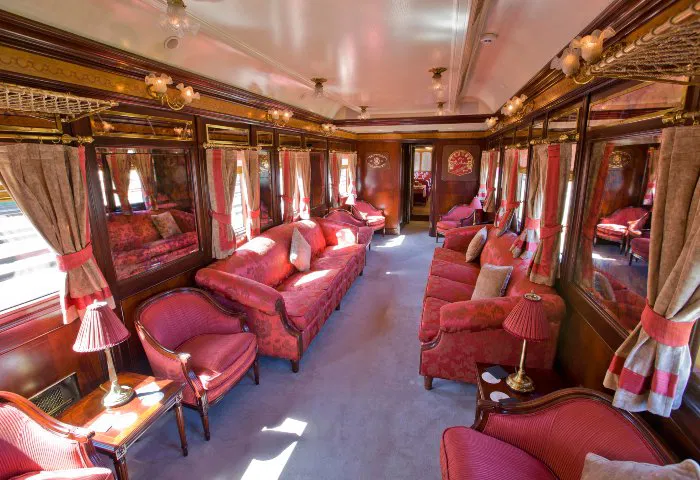
The story of the Boeing 777 family is one of the most important in the world of commercial aviation. Each version of this watershed aircraft has had its moment, much like actors on a stage. Two really stole the show, while the more exotic variant, the Boeing 777-200LR, remained mostly in the background. The 777-200ER and the 777-300ER emerged as some of the best widebodies to ever fly.
The 777 succeeded Boeing’s first widebody twinjet, the 767, and showed the world just how great the platform could be for both the economics of the notoriously volatile flying business and the satisfaction of flyers. The success of the 777 series directly contributed to the decline of its larger quadjet predecessor, the 747. Let’s dive into the story of this iconic long-haul jet and how its combination of technical innovation and simple efficiency pushed it to the forefront of long-range commercial flying in the modern era of ultra-cost-conscious airlines.
The 777 Family
Consider Boeing in the early 1990s, constantly striving to be one step ahead of Airbus, its European arch-rival. The debut of the A330 and A340 aircraft made the competition across the pond even stiffer. In order to close the gap between the smaller 767 and the enormous 747 jumbo aircraft, the American juggernaut took action. Thus, the 777 would be made and revolutionize the way airlines viewed long-haul travel.
When the first 777-200 rolled out of the factory, it was like introducing a new member to an established family business. Airlines were immediately eager for its combination of payload, range, and efficiency. Here was an aircraft that could carry over 300 passengers across oceans with just two engines instead of the four that was standard for such large jets. It was streamlined, modern, and most importantly for the accountants, economical to operate.
As with any successful product, Boeing knew that one size wouldn’t fit all. Different airlines had different needs, and so the 777 family began to grow. The 777-200ER arrived with more fuel tanks for longer journeys and has gone on to be an enduring favorite. Then came the 777-300, stretched to carry more passengers. But the real star was yet to come, the 777-300ER, which combined the best of both worlds with extended payload and enhanced range.
At the same time, Boeing’s engineers were concocting something truly ambitious: the 777-200LR, or the “Worldliner.” This aircraft was designed to be the ultimate long-distance machine, capable of connecting virtually any two cities on Earth without stopping. On paper, it seemed like the perfect solution for airlines wanting to offer their passengers the ultimate in convenience: direct flights anywhere on Earth.
Enter The -300ER
The introduction of the 777-300ER in 2002 maximized the qualities of the 777 airframe. Boeing had expanded the fuselage to carry nearly 400 passengers in standard configuration, with fuel consumption only slightly increased in comparison to the smaller models. Airlines improved income thanks to a variety of cabin arrangements and cargo options made possible by the aircraft’s super-sized twinjet design.
On top of increasing sales revenue directly, these high-end cabin products helped airlines differentiate their brands and fetch premium rates for all cabin classes. Business passengers often pick airlines based on their VIP cabins. The comfort and quality of service fosters a sense of devotion that goes beyond individual flights to corporate contracts worth millions of dollars a year.
Alan Mulally, president and chief executive officer of Boeing Commercial Airplanes, said in 2002 at the unveiling of the new -300ER:
“This is an exciting time for Boeing and the 777. Our original vision of growing the 777 program into a family of five models that safely and efficiently serve the needs of our customers is becoming a reality. The 777 also is the airplane that the flying public asks to fly, with more than one million flights completed since 1995. And with operating economics that are unmatched by the competition, its customer base has grown to include more than 30 airlines.”
Meanwhile, the 777-200LR, remains one of the most extreme endurance commercial jets in the world. Despite its impressive capability to fly over 9,000 nautical miles nonstop, it has unfortunately struggled to generate similar market favor. The aircraft’s extended range came from additional fuel tanks that added structural weight to every flight, even shorter legs that didn’t require the extra capacity.
This permanent weight penalty increases fuel consumption by around 5% compared to a standard 777-200ER, directly impacting operating margins. That is a lot in an industry notorious for razor-thin margins that determine success or failure for airlines. The extra tanks also reduced cargo capacity, eliminating some belly revenue that made other variants profitable.
The hub-and-spoke system that dominates international aviation particularly favors the 777-300ER’s economics. Turkish Airlines, operating from its Istanbul hub strategically positioned between Europe, Asia, and Africa, has found great success with the type. So have Emirates, Qatar, and United Airlines.
Economics Trump Engineering
The Boeing 777 family represents one of commercial aviation’s most compelling success stories. The twinjet was so popular with carriers that it stole the business of the “Queen of the Skies,” the 747, so much so that the line had to be shut down in 2023. Although not every variant proved equally lucrative for airlines. While the 777-200LR captured headlines with its record-breaking range capabilities, the real financial champions emerged as the 777-200ER and especially the 777-300ER. These jets transformed how airlines generate profits on long-haul routes.
The twin-engine configuration alone transformed the economics of transoceanic flight. Where competitors like the Airbus A340 required four engines with their associated fuel burn and maintenance costs, the 777 achieved similar missions with just two massive GE90 engines. This seemingly simple change became a major factor in fleet procurement for airline accounting departments worldwide.
Compared to four-engine alternatives, fuel costs could be dropped by 15% to 20% per seat, and maintenance costs cut proportionately as technicians had to repair half as many engines. The planes remained in the air rather than in repair hangars thanks to high reliability and shorter turnarounds when they did have to go to the shop. The big twins had swept the rug right out from under the four-engine giants.
Consistency Is Key
Its capacity to generate a profit on an extremely reliable performance solidified the 777-300ER’s dominance of the widebody market. Spreading its development cost over large production runs helped Boeing to cut unit costs and create competitive pricing that attracted more orders as more airlines experienced notable returns. Over time, the supply chain created by the network of manufacturers, maintenance providers, and training institutes made 777 operations even more cost-effective and readily accessible.
Boeing designed all 777 variants to begin extended operations (ETOPS) at delivery, and today, the global fleet flies twice as many ETOPS flights as competing models combined. Boeing says that the worldwide total for 777 monthly flight hours exceeds 73,000 at present. Jets that stay in the air earn more than the ones on the ground. The high dispatch reliability of the huge twinjet makes it a top earner for carriers that fly long-haul or just high-density routes that demand a huge cabin capacity to make the most of every departure.
Many airlines kept ordering 777-300ERs or opted to keep their existing fleet in the air longer despite the introduction of newer, more fuel-efficient models from Airbus. A number of carriers, like Emirates, are still waiting for the 777X to finally clear certification and enter production instead of buying from the rival plane-maker. In a rare move in the history of aviation manufacturing, the 777X is not a clean sheet design, but has major alterations that have never been done before in a shared airframe successor.
The 777X’s industry-first folding wingtips, huge windows, adaptive LEDs, and redesigned cabin were pioneered by the 787 Dreamliner, but the next-generation 777 will dwarf every twinjet that has come before it when it finally enters service.
Built To Last
Airlines are able to finance new aircraft at favorable rates due to strong residual values, thanks to demonstrated lessors’ confidence in the 777’s long-term value, which has been comparatively steady even during industry downturns, keeping airline balance sheets safeguarded and preserving financial flexibility. As the global flying business is still in recovery after the effects of the COVID-19 Pandemic, it’s extremely beneficial for carriers to have an aircraft that can weather the storm and earn its keep.
The 777-200LR was a bit of a leap too far and never achieved the success that its family members did, but it stands as a testament to the capability of the airframe all the same. The niche it serves would be nonexistent were it not for the incredibly long-legged jet. As the 747 freighter fleet around the world nears its sunset and no replacements are forthcoming, more 777 freighters will fill the gap. That may create an opportunity for the “Worldliner” to take on a new purpose.
Even as the 777X remains out of reach, the 777 family is a class-leader with a strong supply chain that continues to serve loyal customers around the world. When the incredible successor finally arrives, it will inherit a legacy built on what has become an iconic aircraft.



